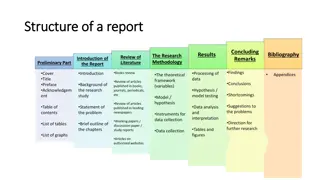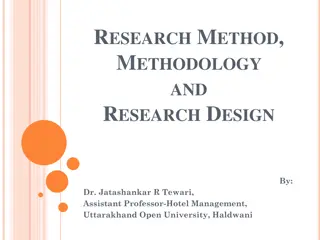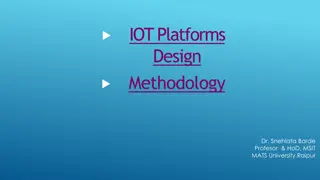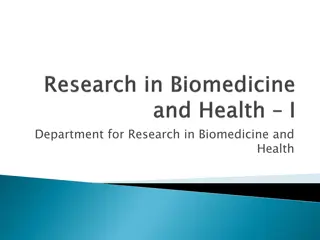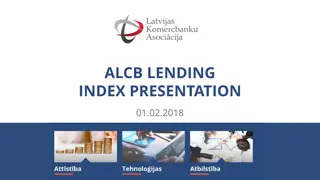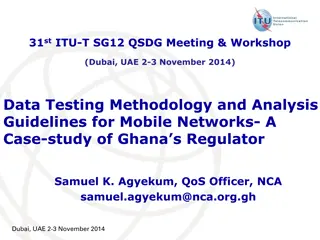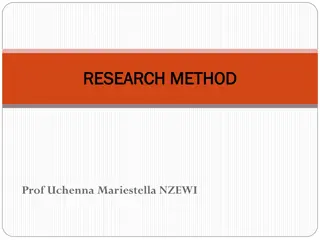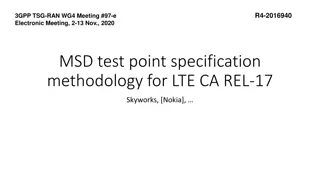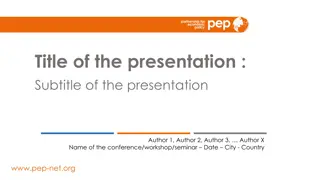RESEARCH METHODOLOGY
Research acts as a catalyst for progress, helping us delve into new realms of knowledge and enhance existing practices. It fuels discoveries, be it in science, technology, health, or other fields. By nurturing curiosity and asking questions, research systematically uncovers answers, paving the way for growth and development. Emphasizing the significance of research, this content underscores its pivotal role in shaping our understanding and driving innovation.
Download Presentation

Please find below an Image/Link to download the presentation.
The content on the website is provided AS IS for your information and personal use only. It may not be sold, licensed, or shared on other websites without obtaining consent from the author.If you encounter any issues during the download, it is possible that the publisher has removed the file from their server.
You are allowed to download the files provided on this website for personal or commercial use, subject to the condition that they are used lawfully. All files are the property of their respective owners.
The content on the website is provided AS IS for your information and personal use only. It may not be sold, licensed, or shared on other websites without obtaining consent from the author.
E N D
Presentation Transcript
RESEARCH METHODOLOGY Omar Farouk Al Mashhour Academic Research and Writing (BUS 149) Semester Fall Date 24thof January 2024
Outline 1. How do we get to know things 2. Why Research is important 3. Meaning of Research 4. Purpose of Research 5. Characteristics of Research 6. Types of Research 7. Research Design 8. Data Collection 9. Data analysis 10.Software for Data analysis
Objectives 1. Students will be able to explain the importance of research in academic and professional fields. 2. Students will understand the difference between qualitative and quantitative research methods and when to use each. 3. Students will be able to outline a basic research design, including selecting appropriate research methods for data collection. 4. Students will understand various data collection methods and demonstrate basic competence in analyzing qualitative or quantitative data. 5. Students will be introduced to basic research tools and software for data collection, analysis, and presentation (e.g., SPSS, Excel, NVivo).
Suppose you have some cash to start up a business. What is the first step you should do? Search for knowledge about the business as well as information about the benefits and risks
During the Pandemic of Covid-19 Humans lives were in danger. Million faced the risk of death. There was a need for a solution for this problem. We need to collect knowledge about it and try to know what is it and how to protect ourselves from it. After a few months, scientists developed Covid-19 Vaccine . How ???? They did a scientific, academic and systematic Search for pertinent (relevant) information on a specific topic (Covid 19) Research
How do we get to know things Have you ever wondered how we learn new things? It all starts with asking questions and being curious. Whether it's a simple question or a complex one, every inquiry is important. Inquiry means exploring by asking questions. It's how we start understanding different topics. Research is all about asking questions in a systematic way. In research, every question can lead to new answers and even more questions, helping us learn and grow. So, don't be afraid to ask and be curious. Every question you ask is a step towards learning something new!
Why Research is important Research is super important for making new discoveries and improving the way we do things. As John W. Best said, research helps us learn more and do better. Research isn't just about science experiments. It's used in all sorts of areas like health, technology, etc. Every time we research, we find new things that can change the world, from cool gadgets to better ways to solve problems. In short, research is all about asking questions and looking for answers, and it's how we keep making things better and safer.
Meaning of Research In order to plan and carry out research, it is necessary to know what we mean by research-in general, as well as in the specialized fields of business management. Research is an Organized and Systematic way of Finding answers to Questions.
Systematic because there is a definite set of procedures and steps which you will follow. There are certain things in the research process that are always done in order to get the most accurate results. Organized in that there is a structure or method in going about doing research. It is a planned procedure, not a spontaneous one. It is focused and limited to a specific scope. Finding answers is the end of all research. Whether it is the answer to a hypothesis or even a simple question, research is successful when we find answers. Sometimes the answer is no, but it is still an answer. Questionsare central to research. If there is no question, then the answer is of no use. Research is focused on relevant, useful, and important questions. Without a question, research has no focus, drive, or purpose
Various social and behavioral scientists have defined the word research in different ways
Several definitions of Research Research is The manipulation of things, concepts or symbols for the purpose of generalizing to extend, correct or verify knowledge, whether that knowledge aids in construction of theory or in the practice of an art."(Kothari, 2014 ) According to (Rocco, 2011), "Research is a careful investigation or inquiry especially through search for new facts in any branch of knowledge. Research is a movement, a movement from the known to the unknown (Redman and Mory, 2010). According to (Creswell, 2008), "Research is systematic investigation to establish the facts." In the broadest sense of the word, the definition of research includes any gathering of data, information and facts for the advancement of knowledge
Purpose of Research 1. Understanding a business problem: The first and foremost objective of any study is to understand, analyze and explore a business problem. Once complete familiarity with the phenomenon is achieved, it is easier to decompose the complex problem into smaller once. 2. Identifying the cause-and-effect relationship: Individuals form groups, and groups form organizations. They are interdependent. It is very important for a researcher to identify the functional relationships among various components of an organization. A scientific investigation is necessary in studying the cause-and-effect relationship of variables involved in a business phenomenon.
3. To innovate new ideas: One of the objectives of a researcher is to bring constant improvement in the techniques of his trade. Apart from verifying and testifying the existing assumptions, one of the functions of a research is to add new knowledge to the state of the art. Research invokes the innovation of new concepts, theories and idea in a business study. Apart from this, research also removes and discards worthless theories that are prevalent in the society. 4. To improve the quality: The whole exercise of any activity is done for the improvement of quality of a product, machinery, or life of human beings. For a business organization it is atmost important to improve the quality of its products. This can be achieved by a systematic and critical investigation i.e. research.
Characteristics of Research: 1. Solution Oriented: The problem of research must be clearly defined and stated. The motive of research must be mentioned in the beginning of research work. The research should provide a solution of a business problem. 2. Logical: In a research we find out facts about a phenomenon and draw conclusions about it. The inferences and generalizations thus made must be logical. For example, all illiterate people in the village live longer than the educated people in the cities leads to the conclusions that illiteracy is the cause of longevity. This is an example of illogical research conclusion. 3. Objective: Observing true picture of a phenomenon without being affected by observers own opinion is termed as objective . Objectivity means knowing reality. The criterion of objectivity is that all researchers should arrive at the same conclusion about the phenomenon on which they are pursuing research. 4. Impartiality: A dishonest research may select data items of individuals to draw conclusions to his favour. This brings bias into research, which affects the objective of the study. Therefore, a true research must be impartial and unbiased.
Characteristics of Research: 5. Accuracy: A research worker needs to gain some expertise in the study he is undertaking. This expertise results in achieving the accuracy in the solution drawn. The accuracy of conclusions is a sensitive issue as it may affect the whole decision-making. 6. Systematic: In a research there should be well-defined steps. Each step should be sequentially linked with another, so that, the whole research work is an organized structure. 7. Verifiability: the results of a research are subjective to verifications. For building a sound basis for decision making one verifies the research results by replicating the study. 8. Empirical: A research is an empirical process and involves data collection. The results are based on observed experience or empirical evidence. Research rejects assumptions and dogma as methods of established knowledge. It accepts only what is verified by empirical observations.
Types of Research: 1. Descriptive v/s Analytical research 2. Applied v/s Fundamental research 3. Quantitative v/s Quantitative research 4. Conceptual v/s Empirical research 5. Other types of research
Descriptive v/s Analytical research Descriptive research basically describes what is. It mainly involves collection, recording, describing and analyzing the facts related to the study. It tries to find the existing status, trend and state of affairs in a phenomenon. Descriptive research involves surveys, but they are not merely data collection as they also involve measurement, classification, analysis, comparison and interpretation. It does not delve into answering questions about how or why things are the way they are; rather, it focuses on "what" is happening or "what" exists. One can only observe and report what is happening in a situation. .. Analytical research, on the other hand deals with what will be. In this type of research, the variables involved are carefully and scientifically controlled and manipulated. Analytical research is also known as experimental research and is a very sophisticated technique. This kind of research is based on four important characteristics namely; control, manipulation, observation and replication.
Applied research a v/s Fundamental research Applied research is action oriented or solution oriented. The main goal of an applied research is to obtain an immediate, specific and practical solution of a problem that a business organization is facing right now. It gives here and now solutions in actual problem situations. It involves scientific investigations but the methods are not so rigorous as in fundamental research. It finds solutions to be applied in local environment and they may not be universally acceptable. Applied research does not promise to add new knowledge to the discipline. Fundamental research is carried out to scientifically enhance the organized body of knowledge of a discipline. Also know as basic research, it is concerned with formulation of theory and generalizations of principles. To evaluate and expand a formulated theory it may use empirical data. Basic research involves systematic, highly sophisticated scientific techniques. Fundamental research may not suggest the solutions of immediate problems, it rather draws long term conclusions.
Quantitative v/s Qualitative research Quantitative research is based on quantitative variables, which can be measured in appropriate units. These involve objects and individuals that vary in size, quantity, amount, scale or degree. For example, prices of commodity can be measured in rupees, weight of a product is measured in kilograms and the mileage of vehicle is measured in kilometers per liter. Qualitative research, on the other hand, is based on qualitative variables, which vary in quality of type. These variables cannot be measured on a scale or in any units. Social scientists use qualitative research for studying human behaviour. In market research surveys qualitative research is carried out to investigate the likes and dislikes of customers. It helps in understanding the current pattern of demand of a company s products.
Conceptual v/s Empirical research Conceptual research involves the development of new theories, abstract ideas, and generalized principles. Philosophers, intellectuals and thinkers carry out this kind of research. On the basis of their conceptual knowledge they build theoretical models. Conceptual research is an intellectual process to develop and verify knowledge. Empirical research is based on observation and experimentation. The information collected in the form of facts develops the conclusions and theories about a phenomenon. The models, so developed, can again be verified by a replication of data collection. To test a given hypothesis empirical research is most popular and powerful tool in the modern world.
Other types of research: Any research study is derivation of one or the other of above four types of research. One can further classify a research on the basis of its purpose, time taken and the discipline of knowledge it relates to. For example, Historical research is the study of past events, historical documents, remains and relics. Clinical research is employed to study the effects of a new drug. Market research is performed to forecast the potential demand of a product. One- time research is carried out on a small scale in short period with a specific purpose. Educational research is directed towards the study and development of educational system. Social research is concerned with the social problems of the society. Field research is done by going out in the field or market, where as Laboratory research is carried out with in four walls of a laboratory.
TYPE OF RESEARCH CRITERIA Nature of Information Gathered DESCRIPTION ENHANCED EXAMPLE Involves describing characteristics or phenomena. Conducting a survey to chart the common study patterns among undergraduates. Descriptive Research Analyzing survey results to understand why certain study patterns lead to better academic performance. Depth of AnalysisInvolves critically examining and interpreting data. Analytical Research Focuses on solving practical, real-world problems. Developing a study app based on research findings to improve student learning outcomes. Applied Research Purpose or Goal Aims at expanding theoretical knowledge without immediate practical application. Investigating the cognitive processes behind learning to develop new educational theories. Fundamental Research Nature of Inquiry Employs numerical data and statistical analysis.Measuring the impact of sleep duration on Quantitative Research Type of Data students' test scores using a large sample size. Conducting in-depth interviews to explore students' emotional responses to academic stress. Qualitative Research Type of Data Focuses on descriptive, non-numerical data. Developing a new theory on learning styles and their impact on academic achievement. Conceptual Research Basis of Research Based on abstract ideas and theories. Experimenting in classrooms to test the effectiveness of teaching methods designed for Basis of ResearchBased on observation, experimentation, or direct experience. Empirical Research
Research Design Think of research design like a recipe for a cake. When you want to bake a cake, you need a plan or a recipe that tells you what ingredients you need, how much of each to use, when to mix them, and how long to bake them. Research design is similar - it's a plan or structure for your research project. Here's what a research design typically includes: 1. Purpose of the Research: Just like deciding what type of cake (chocolate, vanilla, etc.) you want to bake, you need to know what you're researching and why. Are you trying to understand something better, find a solution to a problem, or see if two things are related? 2. Methods of Data Collection: This is like gathering your ingredients. In research, your ingredients are data. Will you collect your data through surveys, interviews, experiments, or observations? 3. Analysis: Just like following steps to mix and bake your cake, in research, you need to decide how you will analyze the data you've collected. Will you look for patterns, compare responses, or calculate statistics? Example: Let's say you want to understand why some students are more stressed than others during exams. Your research design would involve: Deciding your purpose (to understand factors causing stress). Choosing your method (maybe a survey asking students about their study habits, sleep patterns, and feelings during exams). Planning your analysis (looking at the survey results to see which factors are most common among the most stressed students).
Data Collection Data collection is the process of gathering data for use in business decision- making, strategic planning, research and other purposes. Effective data collection provides the information that's needed to answer questions, analyze business performance or other outcomes, and predict future trends, actions and scenarios. In businesses, data collection happens on multiple levels. IT systems regularly collect data on customers, employees, sales and other aspects of business operations when transactions are processed, and data is entered. The collected data must be accurate to ensure that analytics findings and research results are valid.
Primary & Secondary Sources Primary sources: provide raw information and first-hand evidence. Examples include interview transcripts, statistical data, and works of art. A primary source gives you direct access to the subject of your research. Secondary sources: provide second-hand information and commentary from other researchers. Examples include journal articles, reviews, and academic books. A secondary source describes, interprets, or synthesizes primary sources. Primary sources are more credible as evidence, but good research uses both primary and secondary sources.
Methods of Data Collections Surveys Interviews Focus Groups Observation Questionnaire Forms
Data Collection Method Type (Qualitative or Quantitative) Description Common Use Talking one-on-one with people to get detailed information about their thoughts and experiences. Group discussions led by a moderator to gather diverse opinions or ideas on a specific subject. Set of questions given to a lot of people. Answers are usually in a fixed format like 'Yes/No' or rating scales. Understanding personal stories or detailed views on a topic. Interviews Qualitative Exploring what a group of people think about an issue or product. Focus Groups Qualitative Surveys/ Questionnaires Collecting a large amount of data quickly on what people do or think. Quantitative Testing something in a controlled environment to see how changing one thing can affect another. Finding out if and how one thing causes another (like how studying habits affect grades). Experiments Quantitative Understanding behavior in a natural setting (like how students interact in a classroom). Both (depends on the approach) Watching people or events and recording what happens. Observations Examining existing documents like reports, letters, or online posts to get information. Document Analysis/ Studying past events or getting insights from existing materials Qualitative
What is Quantitative Data? Quantitative data refers to any information that can be quantified. If it can be counted or measured, and given a numerical value, it s quantitative data. Quantitative data can tell you how many, how much, or how often for example, how many people attended last week s Seminar? How much revenue did the company make in 2019? How often does a certain customer group use online banking?
What is Qualitative Data? Qualitative data is information that cannot be counted, measured or easily expressed using numbers. It is collected from text, audio and images and shared through data visualization tools, such as word clouds, concept maps, graph databases, timelines and infographics. Researchers will often turn to qualitative data to answer Why? or How? Qualitative data also refers to the words or labels used to describe certain characteristics or traits for example, describing the sky as blue or labeling a particular ice cream flavor as vanilla.
Data analysis Data analysis is the process of cleaning, changing, and processing raw data, and extracting actionable, relevant information that helps businesses make informed decisions. The procedure helps reduce the risks inherent in decision-making by providing useful insights and statistics, often presented in charts, images, tables, and graphs. A simple example of data analysis can be seen whenever we take a decision in our daily lives by evaluating what has happened in the past or what will happen if we make that decision. Basically, this is the process of analyzing the past or future and making a decision based on that analysis.
Methods of Data Analysis Qualitative Data Analysis: The qualitative data analysis method derives data via words, symbols, pictures, and observations. This method doesn t use statistics. The most common qualitative methods include: 1. Content Analysis, for analyzing behavioral and verbal data. 2. Narrative Analysis, for working with data culled from interviews, diaries, surveys. 3. Grounded Theory, for developing causal explanations of a given event by studying and extrapolating from one or more past cases.
Content Analysis Think of content analysis like being a detective with a magnifying glass, examining words, images, or videos to find patterns or themes. You look closely at things like interviews, books, film, or social media posts. The goal is to see what's being said or shown often and how it's presented. Example: Analyzing speeches of a famous leader to see how often they talk about certain topics like peace or economy.
Narrative Analysis This method is like listening to and interpreting stories. It focuses on how people tell their stories and what these stories mean. You gather stories from sources like interviews, diaries, or personal accounts. Then, you look at how these stories are structured and what themes emerge. Example: Studying diaries of historical figures to understand their personal experiences during significant events.
Grounded Theory Imagine you're a miner digging for a new kind of gem. Grounded theory is about digging through data to find new theories that haven t been explored before. You start with data (like interview transcripts), and as you analyze, you look for patterns. These patterns then help you build a new theory. Example: Interviewing a group of entrepreneurs and finding a new theory about what motivates them to start businesses.
Methods of Data Analysis Quantitative DataAnalysis: Statistical data analysis methods collect raw data and process it into numerical data. (Involve statistical analysis) Quantitative analysis methods include: 1.Hypothesis Testing, for assessing the truth of a given hypothesis or theory for a data set or demographic. (The impact of a certain vaccine) 2.Assess the relationship between variable. (the relationship between employee satisfaction and business performance) This method looks at whether and how two things are related. 3.Measure the difference between groups This involves comparing different groups to see if there are significant differences between them. (average height difference between different group of people) 4.Mean, or average determines a subject s overall trend by dividing the sum of a list of numbers by the number of items on the list. Calculating the average test score in a class. 3.Sample (from the entire population) Size determination uses a small sample taken from a larger group of people and analyzed. The results gained are considered representative of the entire body. Selecting 100 people from a city of 10,000 to understand general health trends.
SPSS (Statistical Package for the Social Sciences) SPSS is a software used for statistical analysis. It's especially popular in social sciences, but also used in other fields. It helps in analyzing and interpreting data. You can use it for various tasks like descriptive statistics (like averages and standard deviations), regression analysis, and hypothesis testing. It's user-friendly for beginners and can handle large sets of data, making complex statistical analysis much simpler.
Excel Excel is a spreadsheet program from Microsoft. It's one of the most commonly used tools for data organization and analysis. You can use Excel to enter and store data, perform basic to moderately complex calculations, create graphs and charts, and perform basic statistical analyses. Its versatility and user-friendly interface make it a go-to tool for many researchers, especially for organizing data and preliminary analysis.
NVivo NVivo is a qualitative data analysis (QDA) software. It's designed for qualitative researchers working with text-based or multimedia information. NVivo helps in organizing, analyzing, and finding insights in unstructured or qualitative data like interviews, open-ended survey responses, articles, social media, and web content. It's great for handling large volumes of qualitative data and aids in identifying themes and patterns that might not be immediately apparent.
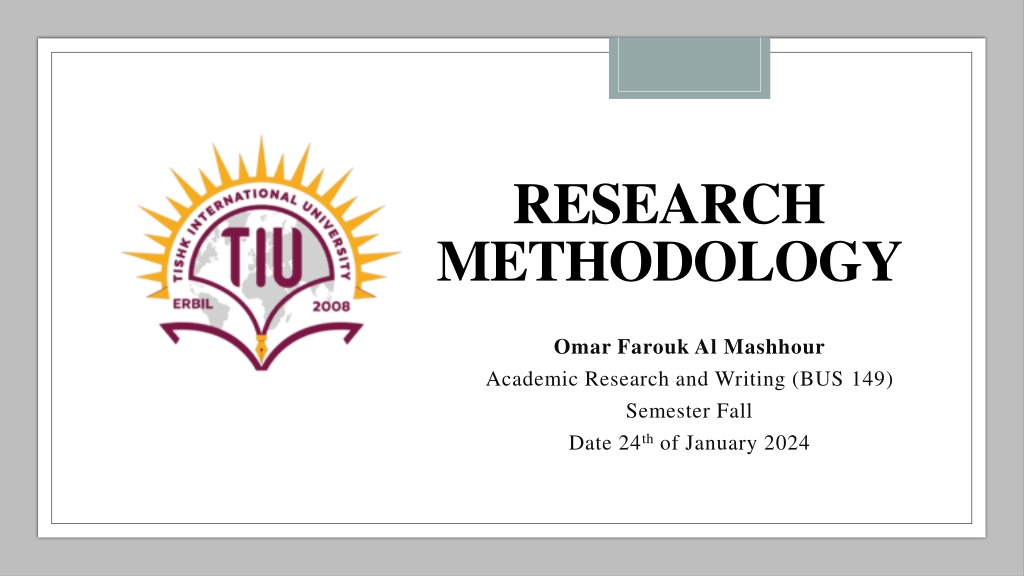
 undefined
undefined















